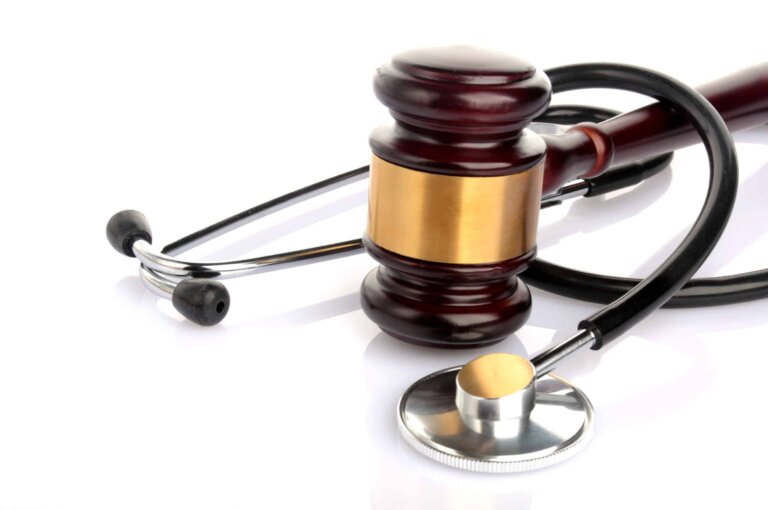Today, medical innovation is more important than ever, and innovation in this field is growing rapidly. However, despite the inherent urgency, the patenting process for medical devices remains largely the same as any other. The complex nature of medical devices may even complicate the patent search and application process further. Inventors face a considerable amount of research to obtain patent protection.
Bold Patents covers the basics of that research in the article below—from common reasons for medical device patent failure to the strategies you can take to avoid them.
Potential Causes of Medical Device Patent Failure
To avoid medical device patent failure, it helps to familiarize yourself with its most common causes:
- One or more claims in the application are duplicative of claims in a separate, related patent. This issue typically arises when the scope of search is too narrow. There are several different fields of medicine to consider when conducting a patent search for a medical device. Although the medical device may be specific to just one of those areas, it’s vital to ensure your search encompasses medical device patents in all relevant fields.
- Issues with claim language. Claim language is an integral component of your patent application. Your claims may be based on patent-eligible subject matter, but your phrasing has the power to contradict that. Using concise language that leaves no room for consideration is critical.
Section 101 Rejections
Upon researching medical device patent failure, you likely encountered the phrase “Section 101 rejection.” Section 101 refers to Title 35 of the US Code Section 101. According to 35 USC § 101 criteria, the medical device you’re attempting to patent must be deemed a process, machine, manufacture, or composition of matter.
Judicially recognized exceptions to these requirements exist, so it’s essential to seek the guidance of an intellectual property attorney to ensure all your claims fall within the legal scope of eligibility. These types of rejections typically occur when one or more claims in the application are not directed to patent-eligible subject matter. However, there are two primary classifications of Section 101 rejections:
- The examiner has determined that your invention doesn’t fall within one of the four categories mentioned above.
- The examiner has determined that your invention is one of the patent-ineligible exceptions—an abstract idea, law of nature, or natural phenomenon.
How to Avoid Medical Device Patent Failure
A United States Patent and Trademark Office (USPTO) rejection isn’t set in stone. Instead, you’ll have an opportunity to respond to each of the examiner’s objections. Even so, it is best to keep the amount of correspondence between you and the USPTO to a minimum. The patenting process already takes a considerable amount of time to complete. The strategies below can help you avoid unnecessary office actions, delays, and ultimately, medical device patent failure.
Broaden the Scope of Your Patent Search
Medical device patent failure can arise when the applicant fails to consider similar patents in separate areas of medical expertise. This issue, sometimes referred to as a Section 102 or novelty rejection, stems from search intent. Often, inventors begin by searching for similar patents within their field of expertise. That’s a great place to start, but it isn’t a comprehensive strategy. As a medical expert, it’s essential to consider all possible application areas for your invention.
For example, the functionality of your device may not be limited to the body part for which it was intended. If the inventor of the syringe only patented their device for use in the arm, someone could potentially patent another type of intramuscular injection device for gluteus medius shots. Your patent search should encompass alternative usages, existing processes, and market value.
Strategize Your Claims
Suppose someone is filing a medical device patent for a new type of intrauterine device (IUD) that prevents ovarian cysts. Another patented medical device exists which is inserted in the same fashion. However, this already-patented device acts solely as a method of contraception. The new applicants’ filings focused a few of their claims on implementation, attempting to patent the process through which their cyst-prevention IUD is inserted.
As mentioned above, processes are eligible for patenting. So why might their claims be rejected? Because despite the difference in functionality, the process through which the new medical device is inserted has already been patented. There are two key takeaways for this example:
- The existing patent for the contraceptive device has an ideal scope of coverage for their IP. If they hadn’t patented the insertion process, the latter cyst-prevention patent would have been able to patent and market that same process without infringing on the original IP.
- The new applicant should have focused their claims on functionality rather than implementation. It is critical to ensure your patent application effectively establishes its adherence to US patent requirements like non-obviousness, which can result in a Section 103 rejection when unmet. Wide-ranging coverage is a good thing, but it isn’t the only thing. An extensive patent search, especially one guided by an experienced IP attorney, will guide your patent strategy in the right direction.
Seek Advice from an Experienced Patent Attorney
There is no way to guarantee 100% protection against medical device patent failure, but the expertise of an IP attorney will get you as close as possible. Medical experts are the most knowledgeable about their devices’ functionality, application, and implementation. Conversely, our medical device patent team possesses the most valuable expertise regarding the legalities of patenting them. Together, medical experts and IP attorneys can combine their strengths to secure the most exhaustive patent protection in the least amount of time and effort.
The IP attorneys at Bold Patents can help minimize your chances of medical device patent failure. When you’re ready to strategize, we’re ready to help. Contact us to schedule a free Discovery Call today and start protecting your IP.

